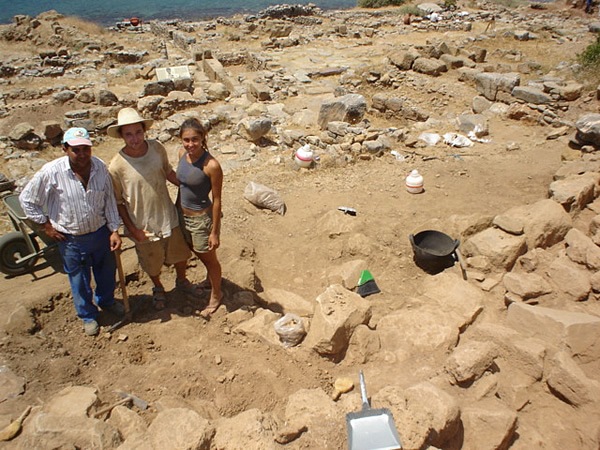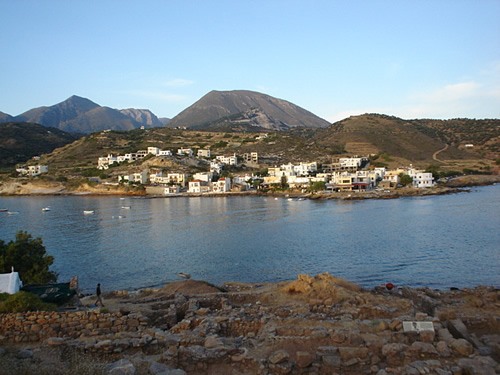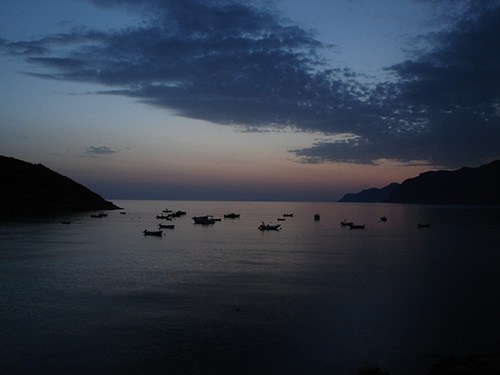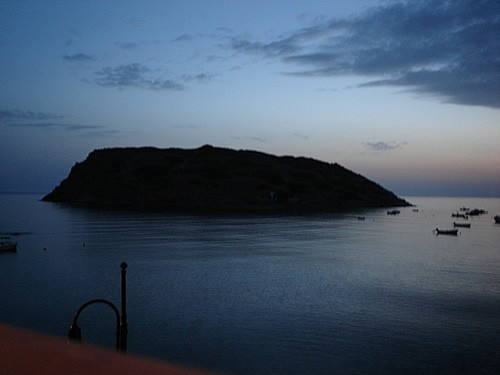Summer Volunteer Work at an Archeological Dig in Greece
How to Make Fieldwork in Archeology Happen as a Student
Article and Photos by Josiah Ramsay Johnston

|
|
During a summer volunteer archeological dig in Greece.
|
The secret is that you can work on an archaeological dig in Greece for a summer for free, if you can get there and are willing to sweat. (You can also pay to participate in organized programs as a student.) It was the spring and I received an email from a high school friend who had since become an archaeology major. In the email he mentioned that he would be volunteering as an excavator in Greece that summer, searching the dirt for clues of how those before us might have lived.
Sitting at my laptop in the itinerant laborers’ hotel in Budapest where my college studies were based that semester, with a heavy snow pouring from the sky outside the window, the idea of traveling down to Greece for the summer seemed like a good one. I asked my friend for the email address of the professor who would be directing the dig, and wrote the man informing him of my desire to volunteer despite my lack of experience.
After letters of reference had been sent and my intentions affirmed, he agreed to allow me to participate, though at that point it was still at my own expense. The semester in Hungary finished in early May, and I bought a discount train travel pass and worked my way south, through the peninsula and Turkey. I booked and took a ferry from Kusadasi to Samos, then Samos to Athens.
Meeting up with my friend, we took in the sights of the capital of Western civilization for a few days, walking in the footsteps of the great philosophers, politicians, and comedians who inform many of our cultures to this day. We spent a day in the Archaeological Museum, hours at the Parthenon, and a few long nights enjoying the city’s electric nightlife.
However, restless to get to the site and start uncovering the past, it wasn’t long before we headed to Piraeus, the port of Athens, and boarded the ferry bound for Heraklion, Crete.
Crete and the Minoans
Crete, once the home of the ancient Minoan civilization, is an island loaded with layer upon layer of history, stacked atop each other over millennia as every Mediterranean empire of the past five thousand years left its mark on the very stones of the place. A land of intense natural beauty, the island is home to a proud, intelligent, hardworking people who will welcome you like few other cultures I’ve experienced.
The Minoans, the first civilization in Europe
and often cited as the Atlantis Plato mentions in some of his dialogues, were wiped out by a catastrophe around 1420 B.C. The theories of the cause of this destruction of Minoan civilization range from the arrival of warlike Mycenaean raiders to the repercussions of a volcanic eruption on the nearby island of Thera.
The fact that the Minoans had exquisite figurative art, architecture, plumbing, and two kinds of scripts–all a few thousand years before the Roman Empire–makes them a fascinating object of study. While the Mycenaean, Hellenistic, Roman, Venetian, Genoan, Saracen, and Ottoman cultures all had their time on Crete, I had journeyed there to learn about these first inhabitants of the island.
It was a small mercantile village of the Minoans, on the mouth of the Bay of Mirabello near present-day Mochlos, which my friend and I were going to excavate that summer. Disembarking the bus at what seemed a random stretch of highway, with a dirt road winding out of sight towards the coast about five miles away, I realized I should have saved some of the water I’d been drinking casually on the bus. A wind from the south blew hot air up from the Sahara, through a sky so blue it seemed like we had landed on another planet.

|
|
Mochlos seen from the sea.
|
Within two miles of trudging through a landscape of wind-tortured trees and rock, we had lost the little hydration we had left. Luckily, a man from the village happened to pass in a beat-up blue Toyota pickup at that very moment. We piled in the back and watched the scenery shrink into the distance where we would have walked, first a quarry of white striped stone, then orchards in rows.
Mochlos, a fishing village of about one hundred souls facing the southern end of the Aegean Sea, is a natural harbor the likes of which is rarely found anywhere in the world. This is why so many civilizations have chosen to use it as a handy base on the northeast coast of Crete.
The village sits at the fulcrum of a w-shaped segment of coastline, with a bay sheltered from the sea on both the east and west. Immediately north of this fulcrum lies an island, a few square miles in area, on which Minoan culture flourished for 800 years.

|
|
Bay of Mochlos.
|

|
|
Minoan island in Greece.
|
The smell of bougainvillea mingled with that of the sea and the fishermen’s catch that day, being cooked in the village restaurant right on the shore. I got a room in a hotel for 20 euros and went to sleep to the sound of the waves lapping against the sides of the fishing boats moored outside my window.
I was awoken before dawn for a quick breakfast of boiled eggs and fruit, before following everyone to the docks and boarding a skiff for the island. I knew that if I wanted to stay the entire summer, I had to convince the director of the dig to finance my room and board. And I knew the only way to do that was with hard work.
The first week I threw myself into the work required before an excavation begins, which consists of cleaning up the site and preparing it for inspection by the Greek Government. With the sun blazing above and temperatures in the nineties, I worked alongside a bunch of archeology students and hired Cretan laborers, moving rocks and refilling excavated holes with the earth that had held their secrets.
At the end of each day, my friend and I would swim the 100 meters back to town before dining on fresh tsatsiki and seafood, washed down with local raki or retsina. In the evenings as the sun vanished below the waters in the west the villagers often danced a beautiful local dance, said by some to have been passed down since the time of the Minoans.
A Discovery
It was on the third day that luck and a sharp eye brought me the opportunity I needed to ensure my stay for the summer. I was shoveling a mound of dirt over a Late Minoan stone wall into a wheelbarrow, which I then carted down an earthen ramp to dump in an eight-foot pit. The mound of earth had been sifted through for possible artifacts, and was being used to fill the pit because it had been excavated down to the earliest levels of human habitation on the island.
Each shovelful I landed in the wheelbarrow meant a little bit of earth bouncing out of it onto the ground. On one of the many trips to empty the load, I jumped the wall and as I gripped the sun-warmed handles of the wheelbarrow I glanced down, seeing a small circular stone on the ground next to my foot.
Picking it up and turning it around, I saw an image cut into its surface. It depicted a four-legged creature, similar to a goat but with long horns like an antelope, running through ferns with a spear in its back. After it was cleaned and examined I learned that the creature was a type of goat once native to Crete but now extinct, imprinted on a mixture of Agate and Cornelian stone that had originated in Afghanistan over three thousand years ago, and had probably been acquired through Minoan trade with the Levantine coast.
It was a seal stone, used as a personal signature by Minoans, and very valuable. My room and board were provided from then on, and every day for two months I rose before dawn for a quick breakfast and the cool breeze of the boat ride to the island, before digging up the pasts of those who lived thousands of years ago under the same Mediterranean sun.
Besides receiving a free, hands-on education in archaeological fieldwork, I came to know and love the Cretan culture I was immersed in while not in the trenches. The friendships I formed there remain fast, and the lessons I learned about the breadth of history and the variety of cultural perspective continue to inform my own perception of the world. And all I had to do was show up.
If that sounds like something you would enjoy, and you can get there and know how to sweat, then get in contact with one of the many colleges that run excavations in Greece and elsewhere in the world and let someone know that you’re willing to work hard for food, a roof, and the chance to uncover the past. With a little luck, you’ll be shoveling dirt in no time.
Resources for Archeological Volunteer Work and Study Excavating in Greece
Places to find information about ongoing archeological digs in Greece:
|
Josiah Ramsay Johnston has
traveled through 40 countries, and lived in eight.
|
